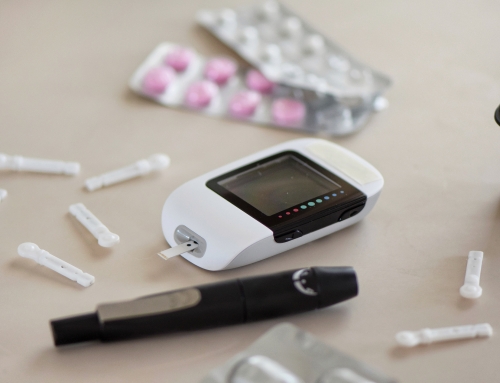By Danielle Kirkman, PhD
For some people with Chronic Kidney Disease (CKD), following a diet prescribed by their doctor may help to delay the need for dialysis.
A diet will not cure kidney disease.
A dietitian can help you develop a diet plan that follows your doctor’s recommendations and is also realistic.
Eating healthy foods can help you feel well.
A meal plan made to fit your needs can help you: get to a healthy weight or stay at a healthy weight, control your blood pressure, control your blood glucose (sugar) and lower your risk of heart disease by giving you energy.
First, and most important, be sure to speak to your doctor or dietitian about your particular diet. Pay attention to fats. Include fiber. Limit sodium (salt). Learn how to include foods you enjoy.
There may be other nutritional changes that your doctor will prescribe. These changes may include the amount of protein, phosphorous and potassium you should eat. Your doctor or dietitian will help you learn how much of these foods are healthy for you to eat. Fat provides calories for energy. Healthier choices are mono-saturated and polyunsaturated fats, which include fish, olive oil, and canola oil. Too much fat can lead to weight gain. Too many saturated and trans-fats can increase cholesterol levels. Limit margarine, shortening, butter and animal fats.
Too much sodium (salt) can be harmful to your health. Limit the sodium in your diet to help control your blood pressure, control fluid buildup and swelling in your body and reduce your risk of heart disease and stroke. Avoid foods that are high in sodium. Some high sodium foods are table salt, canned foods, salty snacks, processed foods, processed deli meats, sauces, marinades, condiments and cheese. Your doctor will tell you the right amount of sodium to include in your meal plan.
Eat fresh or frozen foods when possible. Use low sodium flavorings, i.e. herbs and spices such as onions, lemon and garlic. Most vegetables are good sources of vitamins, minerals and fiber. It’s good to include dark leafy vegetables and different colored vegetables. Talk with your doctor or dietitian to find out the amount of vegetables that are healthy for you.
Most fruits are good sources of vitamins, minerals and fiber too. A serving size is 1 medium size fruit or ½ cup fresh or canned fruit. Select a variety of fruits instead of fruit juice when possible to help manage your weight and blood sugar. Talk to your doctor or dietitian to find out the amount of fruit that is healthy for you.
Select low-fat or fat-free dairy foods. For people with kidney disease, dairy intake may need to be limited to lower phosphorus in your diet. Talk to your doctor or dietitian to find out the amount of dairy that is healthy for you.
Protein helps to build muscles and fight infections. People whose kidneys are not working well should avoid a high-protein meal plan. Protein is found in foods like meat, poultry, eggs and fish. Talk to your doctor or dietitian to find out the amount of protein that is healthy for you to eat.
Learn to read the labels on foods and know the serving sizes. Check the calorie count and look at the total fat, saturated fat and trans-fat. If your doctor or dietitian has recommended you to do so, look for the amounts of protein, carbohydrates, sodium, potassium and phosphorous in foods.
Know your goals and start with small changes. Keep a food journal and work with your doctor and/or dietitian. Ask your family and friends to help you. Know your lab values and talk to your doctor and/ or dietitian about your eating plan. Manage your weight and exercise (but ask your doctor first). Start slowly and engage in some activity every day – even a little bit will help. Get enough sleep and reduce stress. If you smoke, make a plan to stop. Don’t forget to keep your doctor’s, dietitian’s and dentist’s appointments and make sure you tell them about your kidney disease.
Kidney Disease
With Americans living longer and leading a more sedentary lifestyle, the incidence of chronic diseases continues to increase. Physical inactivity is a major risk for disease that remains one of the largest causes of premature death in the United States. Physical activity levels in chronic kidney disease (CKD) patients are markedly reduced and continue to decline as kidney function worsens. Low levels of physical activity in CKD patients are serious, as they are linked with poorer kidney function and they increase the already high risk of heart and blood vessel disease. A sedentary lifestyle also results in a loss of fitness and strength, thereby increasing the risk of disability and the loss of the ability to carry out your basic activities of everyday living. This starts a vicious cycle, as the weaker you become the harder it is for you to engage in physical activity and keep active.
It is therefore very important to keep active as a CKD patient. Over three decades of research has proven that dialysis patients can enjoy many health benefits through regular physical activity. First, taking part in regular physical activity helps to maintain your fitness and strength. Keeping up your strength will allow you to continue carrying out your activities of daily living unassisted as well as take part in leisure activities. As a result, you are more likely to remain independent and have a better quality of life.
Many factors of kidney disease make you more susceptible to heart and blood vessel disease. Increasing your physical activity level may reduce this risk. Regular exercise helps you manage your blood pressure. Research in both pre-dialysis and dialysis patients has shown that the amount of blood pressure medication was reduced following three to six months of regular exercise1,2. Additionally, regular exercise makes your heart more efficient and improves the health and function of your blood vessels 3,4.
When the kidney fails, toxins and acids that are usually removed by the kidney build up in the blood. These toxins and acids, as well as the hemodialysis process, cause your muscles to degenerate and weaken. Not only do your muscles keep you strong and able to carry out everyday activities, but active muscles are important for a healthy metabolism, as they use up sugars and fat from the blood for energy. Increasing your physical activity keeps your muscles active and strong and prevents them from deteriorating 5.
In addition to the physical benefits, regular exercise has also exhibited many psychological benefits. Patients on hemodialysis have lower depression and anxiety levels as a result of increasing their physical activity levels. Regular physical activity helps reduce stress and leaves you feeling revitalized and relaxed.
Getting Ready To Increase Your Physical Activity
Safety first: Before you increase your physical activity or take part in any exercise consult your doctor. You should NOT exercise if:
• You have chest pains at rest or you have suffered a cardiac event in the last 6 weeks.
• You are breathless at rest and you have visible swelling from fluid overload
• You have an acute infection or a body temperature above 101°F
• You have poor diabetic control
• You do not take blood pressure medication and have a blood pressure above 160/100 mmHg
Set Your Goals: Set your main goal to increase your physical activity and share your goal with friends, family or your health care provider. By sharing your goals you create a support network to help you achieve your aims. Ensure that any goals you set are SMART: Specific, Measurable, Achievable, Realistic, and Time-based.
Split your main goal into smaller weekly realistic, achievable goals. For example:
Main Goal: “In six months’ time I would like to be able to walk three miles per week.”
Smaller Goals: “By next week I will make sure I have a comfortable pair of shoes to start walking to increase my physical activity levels”; “Over the next two weeks I will go for a 15 minute walk each day after my dialysis.”
Identify Potential Barriers: Identify any barriers that may prevent you from achieving your goals in advance and make a plan to overcome these barriers. For example: “I will ask another dialysis patient who also wants to increase their physical activity to walk with me; that way when I don’t feel like walking I will have someone to motivate me.”
Increasing Your Physical Activity
If you currently take part in no physical activity, start at a low intensity and gradually increase the intensity and duration as you become stronger. Walking regularly is an easy, convenient way to increase your physical activity levels that has proven health benefits in CKD patients. Using a pedometer to count the number of steps you take per day is a good way to monitor your walking activity. Starting at a level that you are comfortable at, increase your daily step count by 10% each week until you reach the recommended 10,000 steps per day. You may also want to take advantage of new fitness tracking devices (like Fitbit, Up, Jawbone), which can help monitor your daily steps. If you would like to take part in more structured exercise the following table displays some current recommendations.
Exercising during dialysis is a safe and convenient option to increase your activity in a supervised setting when you would otherwise be sedentary. Some dialysis units may have access to stationary cycling equipment specifically designed to fit on the end of a dialysis chair. Speak to your healthcare providers to establish if this is a viable option for you.
Using the Rating of Perceived Exertion (RPE) scale (Table 2) is a good method to monitor the intensity of your activity. Ideally you should ensure that your activity is intense enough for you to benefit from without overdoing it. The RPE scale rates how difficult you feel the exercise to be and ranges from 6 (no exertion at all) to 20 (maximal exertion). The optimal activity intensity should range from 12 (somewhat hard) to 15 (hard).
Safety Considerations: Be aware of the following when exercising:
- Stop any activity if you experience chest pain, dizziness or unusual shortness of breath.
- Sometimes you may have increased thirst levels when increasing your physical activity. Be aware of your fluid restrictions.
- Monitor you blood glucose closely during any activity if you are diabetic.
Slow your activity down if:
- You feel very tired or not able to continue.
- You are too breathless to talk.
- You do not feel fully recovered after one hour.
- You have an unusually high heart rate.




